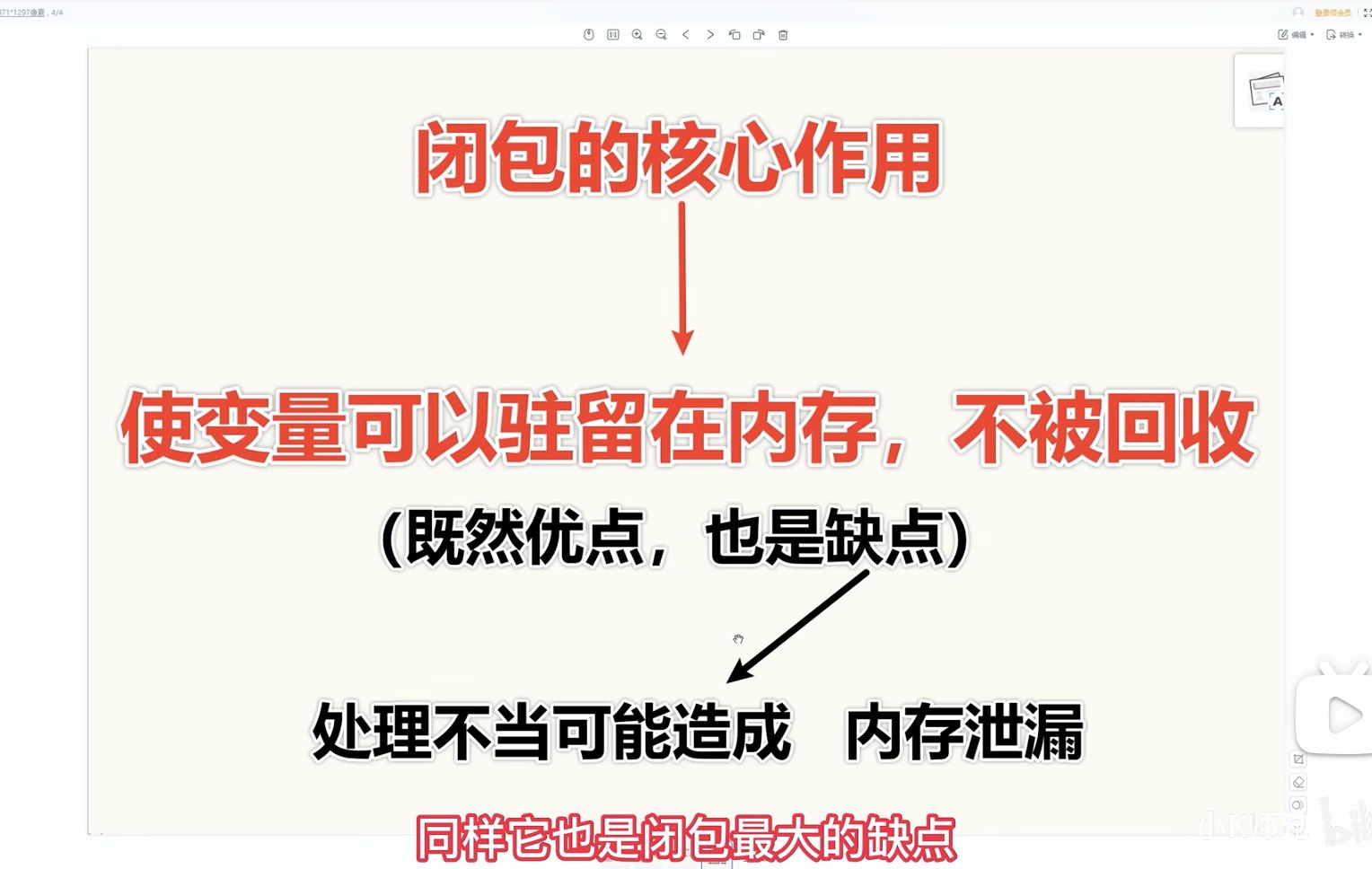 闭包的核心作用
闭包的核心作用
闭包就是能够读取其他函数内部变量的函数。在 javascript 中,只有函数内部的子函数才能读取局部变量,所以闭包可以理解成"定义在一个函数内部的函数"。闭包是将函数内部和函数外部连接起来的桥梁,实现了变量的私有化问题。
有如下例子,我们想要用一个 counter 记录 add 函数的执行次数。
1
2
3
4
5
6
7
8
|
function add() {
var counter = 0; //局部变量
counter++;
console.log("counter = " + counter);
}
add(); // counter = 1
add(); // counter = 1
|
由于 counter 是局部变量,每次我们执行 add()函数,都是输出 counter = 1;
我们想要执行函数时改变 counter 的值,一种可行的办法是:
1
2
3
4
5
6
7
|
var counter = 0; //全局变量,谁都可以访问,修改
function add() {
counter++;
console.log("counter = " + counter);
}
add(); // counter = 1
add(); // counter = 2
|
但是这样会带来问题,由于 counter 是全局变量,我们可能会在函数外不小心改变了 counter 的值,
比如在函数外写了一句 counter = -100;就打乱了我们原来的计数,显然我们并不希望在函数外任意地改变 counter 的值。
我们可以这样写:
1
2
3
4
5
6
7
8
9
10
11
12
|
function add() {
var counter = 1; //局部变量
console.log("counter = " + counter);
plus = function () {
//全局函数
counter++;
console.log("counter = " + counter);
};
}
add(); //counter = 1 counter初始化
plus(); //counter = 2
|
这样我们就无法在函数外任意改变 counter 了,进一步的写法是:
1
2
3
4
5
6
7
8
9
10
11
12
|
function add() {
var counter = 1; //局部变量
console.log("counter = " + counter);
var plus = function () {
//局部函数
counter++;
console.log("counter = " + counter);
};
return plus;
}
var plus1 = add(); // counter = 1
plus1(); // counter = 2
|
plus 函数名有些多余,add 可以简化为立即执行函数。
1
2
3
4
5
6
7
8
9
10
11
|
var plus1 = (function add() {
var counter = 0; //局部变量
return function () {
//全局函数
counter++;
console.log("counter = " + counter);
};
})();
plus1(); // counter = 1
plus1(); // counter = 2
|
发现 add 函数名也可以去掉了,简化为匿名函数,如下就是闭包的一般写法:
1
2
3
4
5
6
7
8
9
10
|
var plus1 = (function () {
var counter = 0; //局部变量
return function () {
counter++;
console.log("counter = " + counter);
};
})();
plus1(); // counter = 1
plus1(); // counter = 2
|
闭包实现了变量私有化,局部变量的本质,全局变量的生命周期。闭包本质是利用作用域链,即当前环境中存在指向父级作用域的引用。
